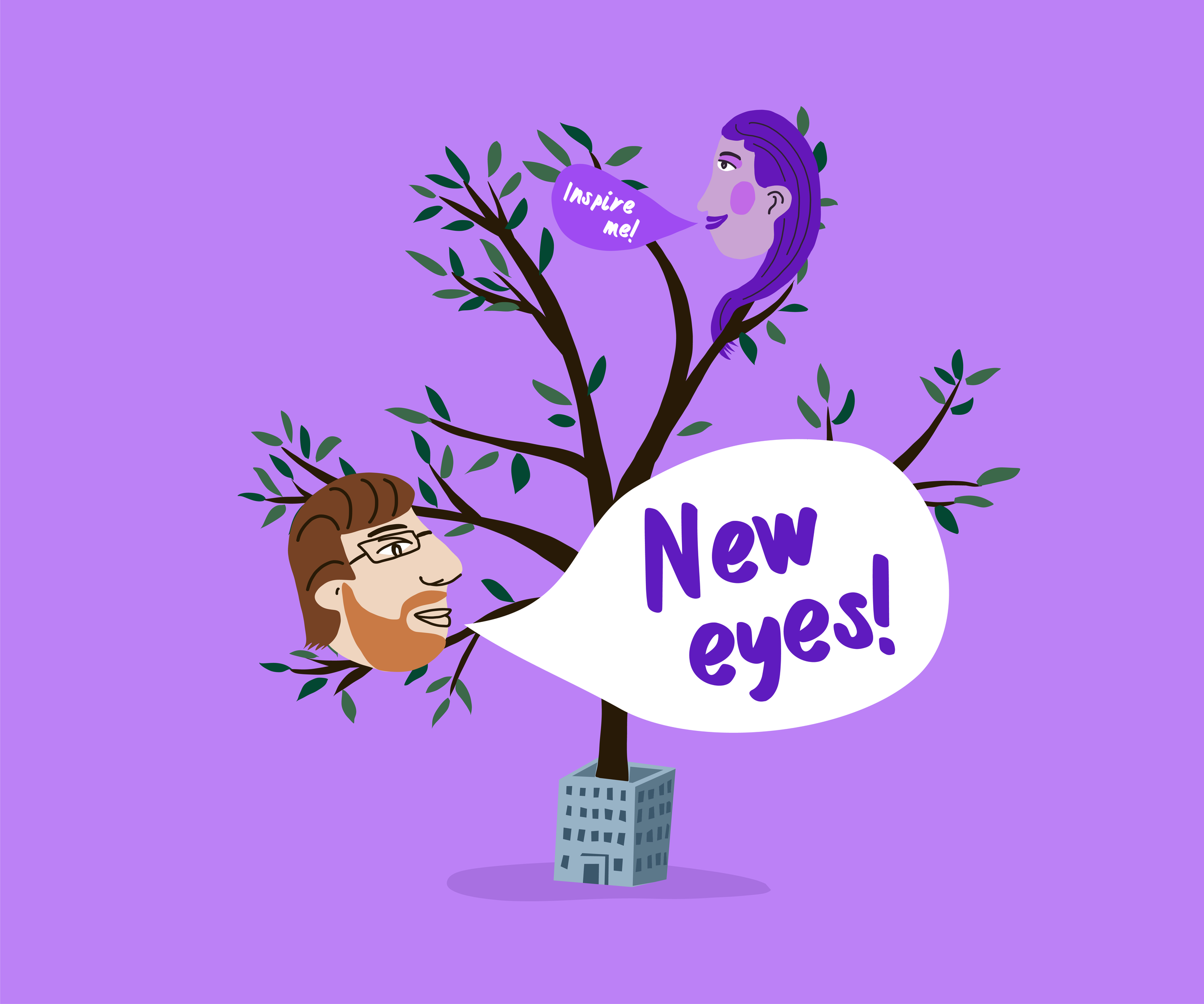2 - New Eyes
By Kate DowlerIndividual perspectives have a powerful role to play in design research. In some situations, the perspective of the person observing or asking the questions can be as important as the perspective of the subject being researched.
I’ve always been fascinated by the way two people can see a situation very differently, or notice very different things when observing the same scene. When my husband and I are out and about, I have an uncanny radar for coffee shops whilst his attention is taken up by passing sports cars and electric vehicles (stereotypical I know, but true!)
From a behavioural science perspective, as individuals we tend to notice things that are primed in memory, or repeated often in our experience. One of my favourite cognitive biases, the Baader-Meinhof effect, describes how a name, or other thing that has recently come to one’s attention suddenly seems to appear with improbably frequency shortly afterwards. The phenomenon was named in 1994 after the west German Baader-Meinhof Group, a far-left militant organisation, when a journalist reported starting to hear the group’s name everywhere after learning about them for the first time.
The role of individual perspectives
Over the last few years, I’ve been exploring the role of individual perspectives in insight-led innovation and design research. Specifically, when are they a hindrance, and when are they a powerful tool to be leveraged.
Leave your opinions at the door
When training as a qualitative researcher, I learnt the importance of being open, non-judgemental and taking care not to influence the research process or lead respondents down a particular avenue of thought.
Purists go even further and use principles from reflexivity, a research approach grounded in anthropology, to provide an even more objective and impartial approach. Reflexivity involves consciously examining and acknowledging the assumptions and preconceptions you as a researcher bring into the research and the impact you have on the outcome.
For most design research studies, this holds true for the most part, particularly when building and testing early ideas.
Inspirational differences
However, I believe that there are some scenarios where the perspective of the person conducting the research is as interesting and important as the person we are talking to or observing. Embracing the power of different perspectives in these situations can help take us on a much more interesting journey.
Insight-led innovation is one of those situations. Here, the purpose of the insight activity (pre-ideas) is as much about inspiring the innovation process as it is about understanding consumer needs, beliefs and desires. One single, unusual observation can be as valuable as identification of common themes or behaviour and you need “New Eyes” to see this.
Using New Eyes
In our front-end insight work at INDUSTRY of Us, we take care to build a diverse project team. We make sure our core research, innovation and design perspectives are all at play during consumer sessions. We also bring subject matter experts into the process to work alongside us to provide a different angle on the challenge. For example, a project on the future of the bathroom might involve an architect, interior designer, urban farmer, Airbnb host and a sustainability consultant.
We work within a key set of ground rules based on solid moderation principles, but the individual members of the project team reflect on what they are seeing and hearing from their expert point of view. We each explore avenues that are interesting to us and hunt for those moments of inspiration. Seeing things differently is more important than making sure we’ve covered every question on the discussion guide.
What does this mean for the overall innovation process? It means that we start with a much richer and more diverse set of starting points as we’ve looked at things from multiple perspectives. It also enables a seamless, accelerated transition into ideas and from there into concepts with a diverse team who have been there from the start.
Use the power of perspective wisely
Getting the right balance between “understanding” and inspiring creativity is key, and the skill is in knowing when and how to play on the power of perspective. When used carefully, this approach gets us to ideas which are original and unexpected, but grounded by rich consumer insight and an understanding of future needs.
For more food for thought, here’s a great video from Canon – it’s a clever way of showing how we all see situations and people differently.

